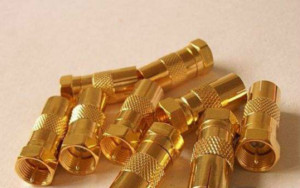Due to various reasons, more or less will result in the quality of nickel coating failure, such as the appropriate remedial measures can be taken to reduce unnecessary rework. In addition to polishing on polished and burr-free coatings, it is also common to refill parts that are not polished or polished to expose the substrate.
Nickel coating is very easy to passivation, especially in air and alkaline solution, so the key to the nickel layer on the plating is to activate the surface of the nickel layer, only the surface of the nickel layer in a good state of activation, fill the plating have a successful grasp The
To make the plating should be based on the nature of the parts, shape and requirements of different methods, such as the appropriate acid-coated copper can be activated in the surface after the plating matrix is not exposed iron, direct copper, nickel plating to fill, such as Not suitable for acid-plated copper or plating matrix exposed iron, the surface should be activated, the direct nickel plating for plating.
Specific methods are as follows: the chromium-plated parts for chromium treatment, the coating foam, skin parts removed, according to the specific parts, respectively, as follows.
(1) suitable for copper plating, nickel: degreasing (preferably with a chemical method) a clean water throw a car scrub (large parts) a concentrated hydrochloric acid activated a clean sulfuric acid etching an acidy copper a clean Sulfuric acid etching a nickel plating a cleaning a chrome a cleaning (recovery) a dry one inspection.
(2) suitable for nickel-plated: degreasing (preferably by chemical method) a clean water throwing a car scrub (large parts) a concentrated hydrochloric acid activated a clean a nickel plating a clean a chrome a clean (recovery) a dry one Check.
(3) the use of electric throwing activation method can also achieve better results. Electro-throw activation method formula and process parameters:
Industrial sulfuric acid (density l.849 / mL) dosage see “preparation” of chromium anhydride 509 / L ‘glycerol 509 / L
Solution density l. 58 ~ 1.629 / mL temperature room temperature
Anode current density l ~ 10A / dm2 time 3 ~ 5s
Preparation of the solution: First, 2/3 volumes of concentrated sulfuric acid (density l.849 / mL) were injected into the lead trough (or ceramic trough, plastic trough) and 509 glycerol was added to each liter of concentrated sulfuric acid. (Or ceramic trough, plastic trough) with a little water dissolved in chromic acid (Cr0.), The amount of chromic acid per liter of sulfuric acid plus 509, and then with glycerol concentrated sulfuric acid solution slowly added to the chromic acid solution, To be very careful, add several times, with the solution to join, the electrolyte began to heat and violent precipitation of gas. The addition of the sulfuric acid mixture with glycerol had to be vigorously stirred and carried out after the last stop of the precipitation of the gas. Solution with a good density should be 1.58 ~ 1.629 / mL. The solution is cooled to 30 ° C, the lead plate is used as the cathode and the nickel plate as the anode, the electrolytic treatment is carried out. The electrolysis voltage is not less than 10V until the nickel ion l09 / L is contained in the solution, and the time is about 25min.
- Low-grade copper, nickel, chromium fill plating process: the hanging with a clean one electric throwing activated a cleaning a dipped hydrochloric acid a clean a pre-plating a dip sulfuric acid a clean a nickel-a clean a hot water about the hanger a dry A check for a clean a chrome a clean a hot water about hanging a dry one inspection

